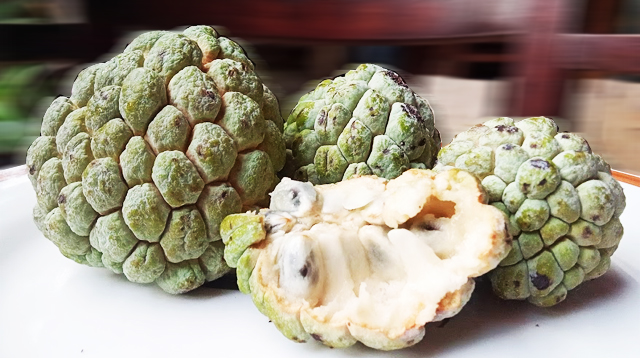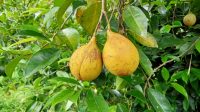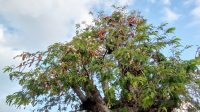- SUGAR apple tastes delicious though it’s slightly difficult to enjoy the flesh due to having many seeds
- Though having similarity with soursop, sugar apple remains to give distinctive flavor
Srikaya or sugar apple is a tropical fruit that has the Latin name Annona squamosa. This shrub-frying plant is suitable for growing in areas with an altitude of up to 800 meters above sea level.
It belongs to the genus Annona. It is said, this fruit comes from Latin America, the Caribbean Islands and its surroundings. Along with the mobility of the world’s population, it has spread to all corners of the world, including Indonesia (Bali).
There are often mistakes within society between sugar apple and soursop. Both do have similarities in terms of pure white flesh and dark brown to black and hard seeds. However, the size and shape of the soursop fruit is much larger than that of sugar apple.
Physical characteristics
Sugar apple is round with many-eyed skin (similar to soursop). The flesh of the fruit is white. The sugar apple fruit is quite unique in shape, namely round and skinned with many eyes.
The color of its fruit is semi-evergreen. The deciduous tree reaches 8 meters in height. The flowers appear in bunches of 3-4, where each flower has the width of 2-3 cm. It consists of six petals, yellow-green with purple spots at the base.
This sugar apple fruit is usually round or similar to a pine cone. The diameter varies from 6–10 cm. Meanwhile, from the side of the skin, it has bumps and scales. The flesh of the fruit has a pudding-like taste. When getting fully ripe, it tastes sweet and has a fragrant aroma.
Benefit
Sugar apple is rich in nutritional value such as calories that are sufficient to meet daily needs. Likewise, it also contains various minerals such as calcium, phosphorus, potassium which functions to protect bones and teeth, strengthen muscles and repair muscles in general as well as vitamin C.
In addition to consumption, sugar apple fruit has the potential to be developed because it contains medicinal properties for various diseases. For example, the leaves and roots can be used as anti-inflammatory, while the young fruit and seeds have anti-parasitic properties.
Where to get it
In season, this sugar apple can be obtained easily at roadside fruit stalls, fruit kiosks, traditional markets and supermarkets.











